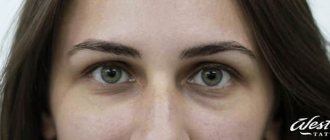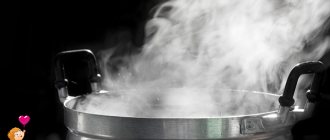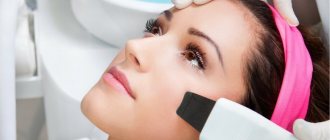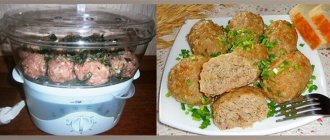A furuncle or boil is a purulent inflammation of the hair follicle, which is caused by Staphylococcus aureus. Nowadays, many people suffer from this disease and wonder: is it possible to swim and go to the sauna with a boil? Experts disagree, but we can say that bathing in the bath and visiting the sauna is undesirable.
There is no strict ban on bathing procedures for boils, but you should be careful when the formation comes into contact with water.
General rules for the treatment of furunculosis
Patients who are faced with furunculosis should follow simple rules that will help reduce inflammation in the shortest possible time and reduce the likelihood of complications. Let's look at the principles in more detail:
- It is forbidden to squeeze out boils on your own, no matter what area of the body they affect. It is most dangerous to squeeze out boils when they are located on the neck, eyes, groin and pubic area.
- Do not resort to self-medication by prescribing medications and folk remedies. Traditional medicine is rich in recipes for curing boils, but only a specialist can prescribe the correct therapy, which will avoid any complications.
- Use medications and strictly follow the doctor’s recommendations until the boils are completely cured, since furunculosis often develops into a chronic form and new boils form one after another.
Basic treatment methods
Treatment methods for boils are usually divided into local and general. General principles of therapy include the use of antibacterial drugs, vitamins, the use of immunotherapy and laser treatment. Thanks to immune therapy, it is possible to restore deteriorated immunity, which helps stop inflammation. Laser treatment allows you to get rid of microorganisms, relieve unpleasant symptoms and accelerate tissue healing. Taking antibiotics plays an important role in therapy, especially when there are many ulcers on the patient’s body. In addition, in some situations, doctors prescribe the use of anti-inflammatory drugs. Local influence is constantly resorted to in the treatment of furunculosis in both children and adults, regardless of the location of the boil.
How to properly heat a boil?
When the infiltrate has just appeared (the boil has not yet matured), the use of dry heat, alcohol compresses, and ultraviolet irradiation is allowed. In some cases, these methods contribute to regression of the disease. If pus has formed in the boil, then under no circumstances should it be heated. This can lead to the spread of infection to surrounding tissues, and the disease will progress.
Warming up is allowed only at the healing stage. If the swelling and redness have decreased and there is no pus or pain, dry heat can be applied. For example, warm bags of salt. This promotes skin regeneration. In addition to warming up, ointments are used (Vishnevsky, ichthyol, Levomekol, Dioxyzol, Oflokain). If there is a risk of infection spreading, antibiotics are prescribed (Dicloxacillin, Metronidazole, Levofloxacin, Vancomycin, Moxiflocacin). Only a doctor can prescribe the correct treatment tactics.
Is it acceptable to bathe with a boil?
There is still no consensus on the answer to the question. Doctors continue to argue about the dangers and benefits of swimming. However, a larger number of experts are convinced that you should not bathe in the bathtub if you have boils. This is due to the fact that during bathing the skin softens, the very soft skin around the abscess is likely to break through at any moment, and the infection will spread to all parts of the body.
The question of swimming in ponds or the sea is not raised at all; doctors strictly prohibit such procedures. The maximum that a patient with boils can afford is to wash for a short time in the shower. Special hygienic rubdowns are also allowed. However, at this moment the area affected by the boil is prohibited from washing. In cases where there is more than one boil, and ulcers are scattered throughout the body, any water procedures are not allowed.
Symptoms of the formation of a boil (boil)
There is a slight itching and tingling sensation. On the 1st-2nd day, discharge appears. They protrude in a cone shape over the skin, which becomes red and painful when touched. At the top there is a small accumulation of pus with a black dot in the center.
The abscess usually breaks through and dries out, and on days 3-7, it is excreted with pus in the form of a rod along with the remaining hair. The resulting wound is cleaned, filled with granulation tissue and heals. The swelling around it gradually decreases, the pain disappears. A small, whitish, somewhat retracted scar remains at the site of inflammation.
Multiple lesions with boils that appear simultaneously or sequentially one after another in different parts of the body are called furunculosis. When it lasts with small remissions for several years, it is chronic, recurrent.
In places devoid of hair (palms and palmar surface of fingers, soles) boils do not develop. Most often observed on areas of the skin exposed to contamination (forearms, back of the hand) and friction (back of the neck, lower back, gluteal region, thighs). Typically, a boil does not cause significant health problems. The pain is moderate, but when localized, for example, in the external auditory canal or in the nose, it is significant. In the facial area (lips, forehead), as well as on the scrotum, boils are accompanied by significant swelling of the surrounding tissues, which is explained by the looseness of the subcutaneous tissue.
Is it allowed to visit the bathhouse?
As mentioned above, any bathing and water procedures are undesirable, and it is strictly prohibited to wet the area near the boil. That is why until better times you will have to postpone going to the bathhouse, which also provokes softening of the skin and carries the risk of skin breakdown. It is allowed to go to the bathhouse only in cases where furunculosis is observed in an acquired form and only when it is not inflammatory-purulent.
However, lovers of traditional medicine often say that visiting a bathhouse for boils is acceptable and, moreover, high temperatures get rid of annoying boils the very next day. It is important to say that you should not self-medicate and make decisions about using such methods for furunculosis, since the disease can lead to serious complications. If you suspect boils, you should immediately go to a specialist who will carry out the required diagnostics, prescribe the necessary treatment and be able to give advice on whether it is permissible for a particular patient to visit the bathhouse.
Diagnostics
Diagnosis should only be carried out by a doctor in a clinical setting. The doctor conducts an external examination, collects anamnesis and prescribes the necessary laboratory and diagnostic measures. Laboratory tests include: a general blood test, determining the number of neutrophils and ESR, a urine and blood test for carbohydrate content to exclude diabetes mellitus. In some cases, the material is examined to determine the pathogen (smear culture and antibiotic sensitivity determination). If necessary, consultation with doctors of related specialties (gastroenterologist, endocrinologist, dermatologist) is carried out.
Preparations for rapid ripening of boils
Recommendations for the use of medicinal substances:
- when the boil has opened, you cannot apply ichthyol ointment so as not to interfere with the release of pus,
- tampons coated with Vishnevsky ointment should not be applied to boils that are localized on the face,
- use "Levomikol" when the boil has burst, as a result of the antiseptic effect, the ointment will promote rapid cleansing,
- For boils larger than 5 mm, consult a doctor; surgical intervention may be necessary.
If you identify a boil in time and constantly monitor it, then complications after using drug therapy will not arise. In addition, monitor the general condition of the body. If you have a fever, loss of strength, or fainting, consult a doctor as soon as possible; in this case, treatment is carried out inpatiently.
Lifestyle with furunculosis: recommendations of immunologists
The course of furunculosis is influenced by many factors. According to the recommendations of immunologists, in everyday life you need to follow the following advice:
- complete, balanced diet, rich in vitamins, plant foods, proteins;
- It is recommended to maintain an active lifestyle;
- giving up bad habits;
- avoid overheating or hypothermia;
- keep the body clean;
- regularly sanitize foci of chronic infection.
- mode of work and rest.
In severe cases of furunculosis, it is recommended to correct the immune system with the help of medications. After immunotherapy, long-term remission of the disease can be achieved.
Avoid drying and damaging the scalp, groin and thighs. It is recommended to maintain good personal hygiene.
When new boils appear, it is recommended to seek help from a specialist; conservative treatment is effective in the first stage of maturation.
Ointments
Levomekol
Anti-inflammatory and at the same time a healing agent. The drug not only helps the boil to ripen faster, but also promotes its healing.
Ichthyol ointment
It copes well with the function of drawing out purulent contents. In addition, it has antibacterial properties.
Its negative features are an unpleasant smell.
Vishnevsky ointment
Improves and accelerates tissue healing, as well as heparin, which also relieves pain.
Why do boils appear on the skin?
The main reason for the appearance of boils is an excessive amount of staphylococcus and streptococcus bacteria. The rods of these dangerous microorganisms penetrate the hair follicle, cause inflammation, which is why pus appears. In a healthy body, the quantitative content of this type of bacteria is normal. Only during illness do they multiply intensively and are localized in a more vulnerable area of the skin.
Why can intensive proliferation of staphylococci and streptococci occur?
- Violation of personal hygiene rules. Due to the fact that a person is careless about his cleanliness, an imbalance of beneficial and harmful bacteria can occur. Rarely washing your body and hands, and insufficient skin care are one of the main reasons for the appearance of boils.
- Weakening of the immune system. Very often, due to periodic illnesses, the immune system is weakened and the ability to fight harmful organisms is reduced. Furunculosis can begin in people with diabetes who have undergone chemotherapy or radiation, as well as in patients with AIDS and HIV infections.
- Purulent formations on the skin can appear due to gastrointestinal diseases, hormonal disorders or diseases of the endocrine system.
- Boils often appear in places where it is constantly damp and wet. They can also occur when the body is hypothermic or overheated.
Since the main cause of boils is a bacterial infection, it can either begin to develop intensively or maintain the same balance. It all depends on how strong a person's immune system is.
Methods to accelerate maturation
Local treatment is used. Antibiotic therapy is used when chiria is found on the face and ear, when the diameter of the neoplasm is more than 5 cm. In other cases, drug therapy and physical procedures are performed to accelerate the maturation of the abscess.
Ointments and creams
The action of ointments and creams is aimed at relieving painful symptoms and drawing out pus. It is necessary to regularly smear the boil so that it goes away faster.
| Group of drugs | Pharmacological action, application | Representative drugs |
| Antibiotics |
Antibiotics promote the reverse development of the abscess or an early breakthrough |
|
| Antibacterial ointments | The drugs destroy the waste products of pathogenic microorganisms. Restore intracellular metabolism | Levomekol, dioxysol. When treating a boil on the eye (hordeolum), tetracycline ointment is used. |
| Pulling ointments | Promote the formation of pustules, the formation of a purulent-necrotic core | Ichthyol, heparin, syntomycin ointment. |
| Nonsteroidal anti-inflammatory drugs | Take for elevated temperature, fever, general weakness | Paracetamol, ibuprofen. |
| Drugs that accelerate scarring | Stimulating cell regeneration, preventing the formation of pathological scars | Contractubex. |
For treatment with ointments, it is advisable to use thin gauze bandages, otherwise local hyperthermia occurs (increased body temperature at the site of inflammation). Ointments can be applied to the damaged area.
Lotions
Compresses and lotions should not put pressure on the affected area. Use 3-4 times a day, duration – no more than 20 minutes a day. To make a new boil ripen faster, bandages are made from clean gauze and lubricated with herbal decoctions and creams.
How to prepare lotions:
- use lotions from herbal decoctions (chamomile, coltsfoot, lemon balm) - help reduce pain;
- compresses using ichthyol ointment accelerate ripening;
- lotions made from a yellow film of the bark of oak branches. The raw materials are poured with boiling water and steamed. Apply a piece of bark to the sore spot and fix it.
Solutions
Hypertonic sodium chloride solution is used to make the boil mature and rupture. It is necessary to treat the bandage with the solution and apply it to the affected area. If the medicine is not available, you can prepare it yourself by mixing 1 tbsp. salt with 0.5 tbsp. chilled boiled water.
Other
The physiotherapeutic method used is ultraviolet radiation (UVR). The boil matures faster and breaks through. The dosage is prescribed by the doctor.
Traditional methods that can be used to quickly break through a boil and relieve painful symptoms:
- smear the abscess with aloe juice at night;
- apply lotions from herbal decoctions;
- spread the new growth with baked onions (you can’t use fresh ones, it leads to burns);
- rinsing with brewed strong black tea;
- The boil will burst faster if you anoint the damaged area with grated boiled beets - cut in half and apply with the cut down. Beets draw out pus.
Before using traditional methods, a sensitivity test of the components is first carried out. To begin with, use the product on a healthy area of skin.
Stages of boil development
A natural question from patients is: “How long does it take for a boil to mature?” Everyone would rather get rid of a cosmetic defect resulting from the appearance of a boil. On average, it ripens up to 10 days. During this time, there are three stages of inflammation in the body:
Formation stage - infiltration
A red pimple forms at the site of infection, which does not have clearly defined edges. At first it forms in small sizes. A ripening boil causes inconvenience due to its bright color and slight itching. Gradually, the tumor grows, the swelling increases, and pain is felt. The size of the swelling depends on the number of blood vessels around the boil. The formation period takes three to four days.
Stage of pathogen reproduction - suppuration
Pronounced progress in the development of staphylococcus bacteria is the stage of formation of pus. The boil takes on the external shape of a cone, inside of which there is a purulent core. A white head is visible at the edge of the cone, which patients try to break through on their own by pressing or piercing. Such actions are prohibited. Otherwise the outcome will be negative. At the stage of suppuration, increased body temperature and physical weakness are possible. The suppuration stage also lasts 3-4 days. It is easy to calculate that the time period from appearance to ripening is 7-8 days.
Breakthrough and Healing Stage - Final Stage
If there were no complications during all periods, then the process of breakthrough of the purulent core will occur without human intervention. The yellow rod should be easily separated from the skin tissue. After 2-3 days, a scar with a crust forms on the infected area, which will disappear in the near future.
As a result, with normal development, the boil will disappear in a week and a half. But there is a danger to the body when the boil does not mature for a long time.
Dangerous symptoms for the patient appear, which only a specialist doctor can help eliminate.
Symptoms that can have a negative impact on a person’s health:
- the stage of suppuration dragged on for more than a week, the head of the rod cannot form for a long time,
- the enlargement of the boil is more than 5 mm, the patient’s temperature does not subside and the unbearable pain does not stop,
- Other purulent formations appeared around the boil, which led to the formation of a carbuncle.
If the above symptoms appear, go to the hospital as soon as possible. The attending physician will prescribe measures to accelerate the maturation of the boil, including ointments, antibiotics, and folk remedies.
The boil should break out without human intervention











